WIRE ROPE USE RECOMMENDATIONS
The service life of wire rope can be significantly extended by taking proper steps for use, installation, and maintenance.
Common wire rope abuses caused by improper use can lead to dropped loads, as well as increased spend from replacement ropes. Make your lifts safer and less expensive by following these recommendations for wire rope use.
Unloading, Unreeling and Uncoiling
Suitable precautions should be taken to prevent dropping of reels or coils during unloading and moving. If the reel should collapse, it may be impossible to remove the rope without serious damage.
Special care should be taken in unreeling wire rope to avoid kinking, which can result in permanent damage to the rope. The reel should be mounted on jacks or a turntable so that it will move freely. It should be unreeled straight and under enough tension to keep it from starting a loop.
A coil should be unwound by rolling along the floor like a hoop. Coils should never be laid flat and the free end pulled out.


Transferring Rope from Reel to Drum
The reel should be placed as far from the drum as possible in order to avoid putting any turn into the rope.
Rope should be wound from top-to-top or bottom-to-bottom to avoid reverse bends, which tend to make a rope harder to handle.
Use enough tension to avoid kinking. There is usually only one way to install rope on a grooved drum.

On ungrooved drums, the “rule of thumb” guides installation. The fist represents the drum; the index finger the wire rope; and the thumb the direction of the proper dead end location.
Use the right hand for right lay ropes, the left hand for left lay ropes. For overwinding, the palm is down; for underwinding, the palm is up. Most drum anchors are set for right lay rope since it is the most common specification.



On installations where the rope passes over a sheave onto the drum, the maximum fleet angle (angle between the center line of the sheave and the rope) should be not more than 1-1/2 degrees for a smooth-faced drum and 2 degrees for a grooved drum.
A 1-1/2 degree fleet angle is equivalent to 38 feet of lead for each foot of rope travel on either side of the center line of the sheave. Smaller fleet angles may result in the rope piling up on the drum.
Larger fleet angles may cause excessive wear from rubbing against the flanges of the sheave as well as excessive crushing and abrasion of the rope on the drum.
Break In Wire Rope
A few trips through the working cycle at slow speed and light load will set the strands firmly in place for smooth, efficient operation.
On applications using a wedge socket, such as drag and hoist ropes, it is also a good idea to cut off a short section of rope to allow twist to run out and to equalize the strands.
Practice Proper Operation
Skillful operation is important to wire rope performance. Rapid acceleration, shock loading and excessive vibration can cause premature rope failure. Smooth, steady application of power by the equipment operator can add significantly to wire rope service life.
Shift Wear Points
Some sections of most wire ropes get more wear than others. A regular inspection program will identify points of wear and lead to wear-shift practices that will extend wire rope life.
In many common situations, cutting off short lengths of the rope will redistribute the points of maximum wear:
- Rope on a drum with two or more layers will wear at the point where the rope starts each successive layer.
- Crane ropes will fatigue at an equalizer sheave. Careful inspection is required to identify fatigue points.
- Hoist ropes will frequently fail from vibration fatigue at sockets, clips and dead end points.
Lubricate Wire Rope
Factory lubrication is not always sufficient to last the useful life of wire rope. Periodic field lubrication may be required to minimize friction and provide corrosion protection. Important guides for field lubrication:
- Ropes should be inspected frequently to determine the need for lubrication.
- Clean the rope thoroughly with a wire brush, scraper or compressed air to remove foreign material and old lubricant from the valleys between the strands and the spaces between the outer wires.
- The lubricant should be applied at a point where the rope is being bent in order to promote penetration within the strands. It may be applied by pouring, dripping or brushing.
- Used motor oil is not recommended as a wire rope lubricant.
Bronze Lube® is recommended for re-lubing ropes originally supplied with Bronze Lube. In other situations, the lubricant should be light bodied enough to penetrate the rope. It should also contain a corrosion inhibitor.
D/d Ratio: Matching Wire Rope with Sheaves and Drums
The ratio of the diameter of the wire rope to the diameter of operating sheaves and drums (D/d ratio) is particularly important to service life. A sheave or drum that is too small for the rope diameter will cause premature failure due to bending stresses.

Efficiency falls as the D/d ratio becomes smaller. This curve, based on static test data only, illustrates the decline of bending efficiency for 6x19 and 6x37 classification ropes as the D/d ratio is reduced.

Service life increases as the D/d ratio becomes larger. This curve, based on bending and tensile stresses only, illustrates the relative performance increase.

To calculate the recommended or minimum sheave diameter for any given rope, find the rope construction and multiply the rope diameter by the value shown. (Ex.: Recommended sheave diameter for a 6 x 19 classification wire rope of 3/4" diameter would be 51 x.75 = 38-1/4")
Rope speed also affects fatigue life. Higher operating rates require larger sheaves. Reverse bends from one sheave to another should be avoided.
Other factors that affect bending fatigue life are load, number of cycles and condition of the sheaves and drums. Consult Hanes Supply for specific recommendations.
Matching Grooves to the Wire Rope
Grooves should be spaced so that one wrap of rope does not rub against the next wrap during operation.
Grooves in sheaves and drums should be slightly larger than the wire rope to permit the rope to adjust itself to the groove. Tight grooves will cause excessive wear to outer wires; large grooves do not support the rope properly.
Wire ropes are manufactured slightly larger than nominal size. Maximum allowable oversize tolerances are shown in the table.
As a rope is run through a groove, both become smaller. A used groove can be too small for a new rope; thus accelerating rope wear. A compromise between rope life and machining frequency must be made.
Grooves should have an arc of contact with the wire rope between 135 and 150 degrees. They should be tapered to permit the rope to enter and leave the groove smoothly.
Field inspection groove gauges are made to the nominal diameter of the rope plus 1/2 of the allowable rope oversize tolerance. When the field inspection gauge fits perfectly, the groove is at the minimum permissible contour.








































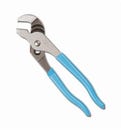 Channellock® 426 Tongue and Groove Plier, 7/8 in Nominal, 3/4 in L C1080 High Carbon Steel Straight Jaw, 6-1/2 in OAL
Channellock® 426 Tongue and Groove Plier, 7/8 in Nominal, 3/4 in L C1080 High Carbon Steel Straight Jaw, 6-1/2 in OAL
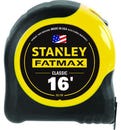 Stanley® 33-716 FatMax® Reinforced Tape Rule with BladeArmor®, 16 ft L x 1-1/4 in W Blade, Mylar® Polyester Film Blade
Stanley® 33-716 FatMax® Reinforced Tape Rule with BladeArmor®, 16 ft L x 1-1/4 in W Blade, Mylar® Polyester Film Blade
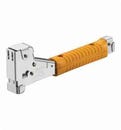 Arrow™ HT50 Professional Heavy Duty Tomahawk Hammer Tacker, Flat Crown Staple
Arrow™ HT50 Professional Heavy Duty Tomahawk Hammer Tacker, Flat Crown Staple
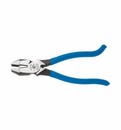 Klein® D2000-9ST 2000 Heavy Duty Rebar Work Cutting Plier, 9-3/8 in OAL
Klein® D2000-9ST 2000 Heavy Duty Rebar Work Cutting Plier, 9-3/8 in OAL
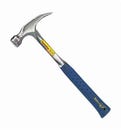 Estwing® E324S Framing Hammer, 16 in OAL, Smooth Surface, 24 oz Steel Head, Straight Claw, Steel Handle
Estwing® E324S Framing Hammer, 16 in OAL, Smooth Surface, 24 oz Steel Head, Straight Claw, Steel Handle
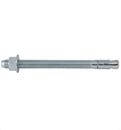 DeWALT® Power-Stud®+ Powers® 7449SD1-PWR Expansion Wedge Anchor, 3/4 in dia, 10 in OAL, 7-1/2 in L Thread, Carbon Steel, Zinc Plated
DeWALT® Power-Stud®+ Powers® 7449SD1-PWR Expansion Wedge Anchor, 3/4 in dia, 10 in OAL, 7-1/2 in L Thread, Carbon Steel, Zinc Plated
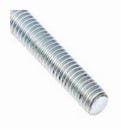 BBI® 777037 All Threaded Rod, 3/8-16, 12 ft OAL, Steel Alloy
BBI® 777037 All Threaded Rod, 3/8-16, 12 ft OAL, Steel Alloy
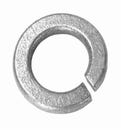 BBI® 754072 Medium Split Lock Washer, 1/2 in Nominal, 18-8 SS
BBI® 754072 Medium Split Lock Washer, 1/2 in Nominal, 18-8 SS
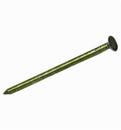 Primesource® 8CTDSKR Sinker Nail, 17/64 in, 2-3/8 in L, 9 ga, Vinyl Coated, Smooth Shank
Primesource® 8CTDSKR Sinker Nail, 17/64 in, 2-3/8 in L, 9 ga, Vinyl Coated, Smooth Shank
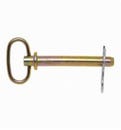 Campbell® T3899724 Hitch Pin, 1/2 in dia, 4-1/4 in L Usable, Forged Steel, Zinc Plated with Yellow Chromate, 5 Grade
Campbell® T3899724 Hitch Pin, 1/2 in dia, 4-1/4 in L Usable, Forged Steel, Zinc Plated with Yellow Chromate, 5 Grade
